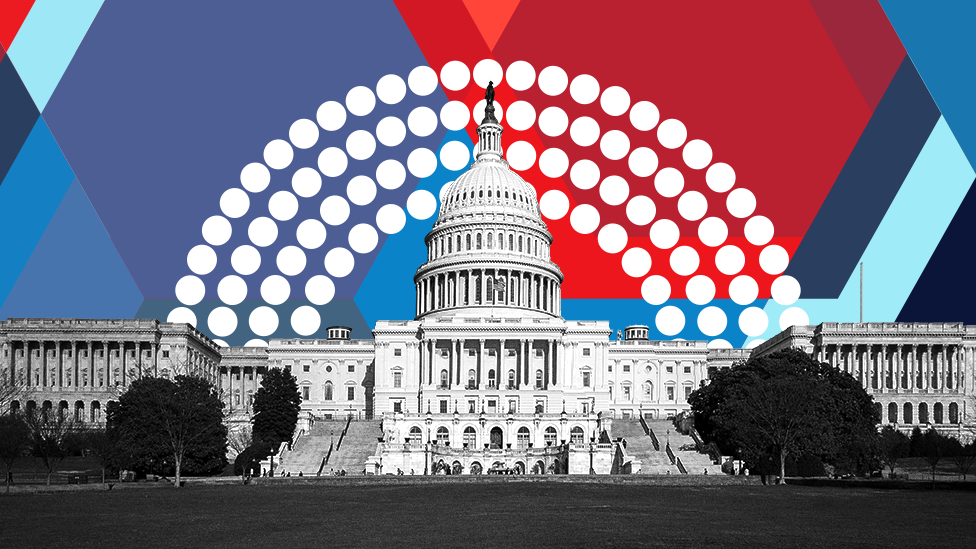ARTICLE AD BOX

The Republicans have made some progress in the House of Representatives while the vote for the Senate is on a knife-edge.
Here is what we know so far about the results.
The House is leaning Republican
The House of Representatives is leaning towards the Republicans, according to projections from CBS News, the BBC's partner in the US.
The Republicans need to increase their number of seats by five to take control of it. If the Democrats lose the House, this will make it difficult for President Joe Biden to pass laws during the next two years of his term of office.
The Democrats are trying to hold on to control of the Senate, the upper chamber of Congress. Most of the races that will decide the Senate have yet to be called.
Before Tuesday's election the Senate was split 50-50 but the Democrats had control through the casting vote of the vice-president Kamala Harris.
There are 35 of the 100 seats up for grabs. The Democrats have taken Pennsylvania, John Fetterman beating Trump endorsed candidate Mehmet Oz. They have also held onto New Hampshire where the Republican candidate had been polling well.
Florida has been a tight race in the past, but the Republicans held onto seats there without much problem.
Ron De Santis won the governorship - he is tipped as a potential Republican presidential candidate in 2024. His party colleague Marco Rubio held onto his Senate seat.
Republicans also did well in the House of Representatives races in Florida, flipping three seats which has put them on the road to taking overall control from the Democrats.
What drove the vote?
Rising prices and abortion were the two issues top of voters' minds as they cast their ballots, according to the national exit poll.
Almost a third of people surveyed said inflation was the issue that mattered most in deciding how they voted. A large majority of voters also said it had caused them hardship in the past year.
But abortion was another top issue, with 27% of people saying it was their deciding factor, after the Supreme Court overturned a ruling which had given nationwide protection for abortion rights.
The other three issues - immigration, crime and gun policy - each scored around 10%.
That said, voters were sharply divided along party lines - inflation was by far the biggest issue for Republicans, while for Democrats, abortion was top.
The exit poll is conducted as people leave polling places across the country. Voters are asked to fill in a confidential questionnaire with demographic information and their views on candidates, parties and a range of topics.
Those topics include the election process itself. More than two-thirds of voters said they thought that democracy in the US was somewhat or very threatened. Only 9% said it was very secure.
Abortion votes
Five states voted on changes to abortion rules.
Vermont and California both voted in favour of including the right to reproductive freedom in the state constitutions.
Michigan is voting on the same matter.
In Kentucky, however, the questions is the opposite - whether or not to specifically exclude the right to abortion in the state constitution.
In Montana, voters have not been asked about abortion directly. Instead they are being asked to decide on a so-called "born alive" measure that would guarantee any newborn infant, even those born as a result of abortion, the right to medical care that will preserve life.

 2 years ago
40
2 years ago
40








 English (US) ·
English (US) ·